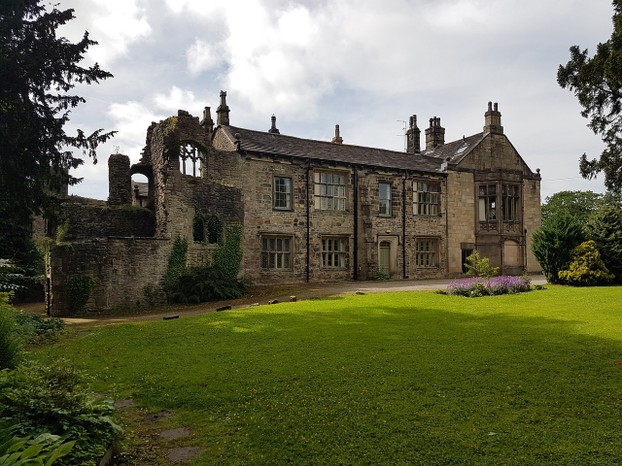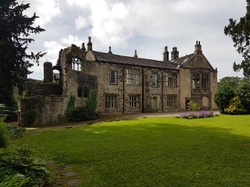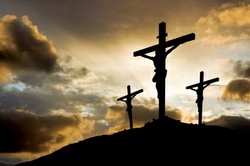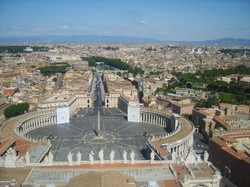Amid all the bad news that besets us I was heartened by a small item on the BBC's North West news, which covers Lancashire, Cumbria and Cheshire. As one who celebrates England's Catholic traditions and mourns the destruction wrought by the tyrannical Henry the Eighth, I was filled with joy. Four hundred and eighty four years after the murderous expulsion, monks will be back at Whalley in central Lancashire. True, it will not be the order of monks who were expelled, and they will be Church of England rather than Roman Catholic, but what does that matter? A wrong is in the process of being righted, that is what matters.
Whalley was home to Cistercians, silent penitential monks who sought lonely places in wildernesses if possible where they could pray and keep sheep. An offshoot of the Benedictines they first came to England in the late twelfth century. Shortly after the arrival of the first Cistercians a group of them were invited by the Earl of Chester to establish a monastery at Stanlow [meaning small stony hill] near the mouth of the river Mersey. For some years the site thrived, but geography was against it. First there was a flood, not surprising considering that it was on a flood plain. Next the church tower collapsed in a gale. Finally not long afterwards there was a fire. A new site was needed. Progress was slow, but a site was found near Clitheroe by the banks of the small river Calder. The monastery was slowly and steadily rebuilt, and the development continued up to the time of the last abbot, Adam Pawley, who rebuilt the abbot's quarters and added a lady chapel, dedicated to Our Lady. During this brief period of three hundred years the abbey thrived and became one of England's great abbeys. Then in 1537 the king's commissioners arrived to loot the place. The abbey's lands were confiscated. When Catholic Northern England arose in protest at the Pilgrimage of Grace in 1536 the rebellion was crushed with maximum force and savage reprisals, and Adam Pawley went to the scaffold to be hung, drawn and quartered for his pains.
In 1553 the house and lands were sold to a pair of businessmen/landowners, one of whom took the monastic buildings as his share. While much of the site remained intact he tore down the abbot's quarters and the infirmary to make room for a house, which you see in the picture below. The house almost certainly contained stones taken from the abbey and included a small section of the abbey buildings. In the next century the abbey church was torn down. Some buildings, including the gatehouse, now roofless, survived.






 Pilgrimage. A review15 days ago
Pilgrimage. A review15 days ago
 Leo the Fourteenthon 05/09/2025
Leo the Fourteenthon 05/09/2025
 The Melsonby Hoardon 03/25/2025
The Melsonby Hoardon 03/25/2025



Comments
It variesbwithbthe individual and thevinstitution.
Thank you for your comment below in answer to my previous observation and question.
Unitedstatesian office workers may like the comfort of a casual-dress day that typically means jeans. That day often must be Friday, as meaning the beginning of a casual, comfortable weekend.
Would British Isles-ers want such a blue-jean day into a blue-jean weekend or would they already -- like their Unitedstatesian friends ;-D on the other side of the Atlantic pond -- be wending their way through such a blue-jeaned last workday into a blue-jeaned weekend?
Yes, they are popular, but the issues that you mention are common.
Thank you for your comment below, on Apr 20, 2024, in answer to my previous, previous-day observation and question Apr 19, 2024.
Some Unitedstatesians are not allowed to wear blue jeans -- no matter how expensive or stylish they be -- on their jobs. Others are allowed, for example, on Fridays.
Do British-Isles-ers like blue jeans?
If so, do they meet with conflicts such as those mentioned above?
The normal clothes for monks and nuns would be what ordinary people wear.
The first paragraph in the third subheading, The New Community, advises us that "in other ways it will be modern, as the monks will not wear habits, but normal clothes."
What are "normal clothes" for new-community monks?
Thankyou for this information. I have made the effort to study every major religion in the world, but the subject is so vast that there will ever be more to learn, and you have told me something that I did not know.
Christian monks avoid idle chatter, but the Trappist order, a branch of the Cistercians, takes a vow of silence. There are various orders, each with its own version of the rule. Western monks all follow versions of the rule of Saint Benedict, a fifth century monk, but Eastern monks follow the rule of Saint Basil.
I am in awe of monks. Buddhist monks who renounce would also take the vow of silence. Same with the Nuns. It is essential to free the mind from the garbage and commotion to concentrate. On a similar note to your article, in India soon after King Ashoka died - mass execution of Buddhist monks and destruction of monasteries began. Brahmins who wanted Hindutva to spread everywhere demolished Buddha Vihars (in present Bihar) and turned into temples. The famous Tirupati temple adorns an idol which today people worship as Vishnu. Archaelogists and Researchers have argued that it is actually Buddha's idol. The priests of the temple will not allow any investigation and the idol to be touched. During Buddha's time there were no clear Deities defined. People worshipped Deities of Sun, Water and Wind. All religious deities came later. I have seen idols of Buddha converted to Hindu Gods.
I don't mention Whalley.
Abbot Pawley was not torn apart, but partly hanged and then cut up. As Wizzley is a family site I won't give details. We don't know where he was buried or what happened to the body.. He was not permitted last rites
frankbeswick, Thank you for the practicalities, picture and product.
Do you cover Whalley in your book?
It's awful what happened to Abbot Pawley. Was he given proper burial? Was he permitted last rites? Whether he was or not, where would they have placed what was left of him after being pulled in the cardinal directions by four horses? There surely would have been those who would have wanted to step lightly around his burial place.